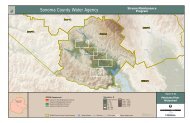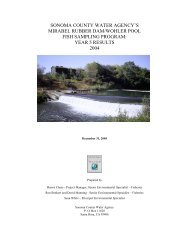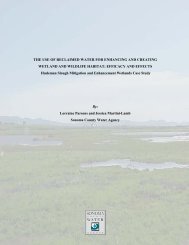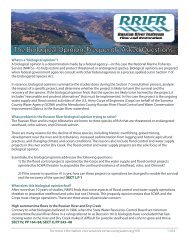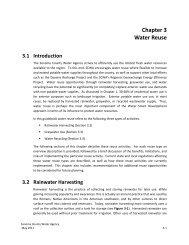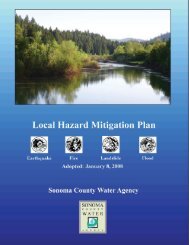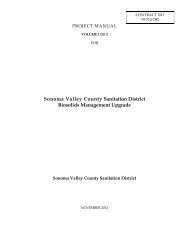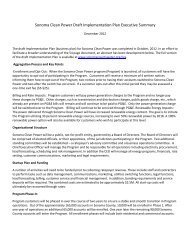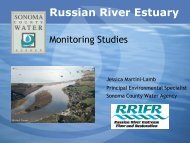Hydrography of the Russian River Estuary - Sonoma County Water ...
Hydrography of the Russian River Estuary - Sonoma County Water ...
Hydrography of the Russian River Estuary - Sonoma County Water ...
You also want an ePaper? Increase the reach of your titles
YUMPU automatically turns print PDFs into web optimized ePapers that Google loves.
3.4 – Stratification and water-column stability<br />
From <strong>the</strong> above discussion <strong>of</strong> DO, temperature and salinity fields in <strong>the</strong> estuary, it is<br />
clear that stratification plays a primary role in circulation, water residence and water<br />
properties during closure events. Stratification controls vertical mixing, reducing it or<br />
completely suppressing it, and results in observations <strong>of</strong> deep-water hypoxia, mid-water<br />
hyper-oxic conditions and mid-water hyper-<strong>the</strong>rmal conditions. Stratification is also<br />
evident during open-mouth periods, most notably during neap tides and weaker river<br />
flow. Density <strong>of</strong> <strong>the</strong> water during closure (Figure 3.28) shows a vertical difference <strong>of</strong><br />
about 20kg/m 3 and sharp stratification approaching 10kg/m 4 throughout <strong>the</strong> mid/outer<br />
estuary. During high-tide conditions (Figure 3.28), <strong>the</strong> water column at <strong>the</strong> mouth is well<br />
mixed while <strong>the</strong> outer estuary is partially mixed, with stronger stratification observed in<br />
mid-estuary.<br />
Figure 3.28. Density during closure (top) and high tide (bottom). Units are kg/m 3 .<br />
45





